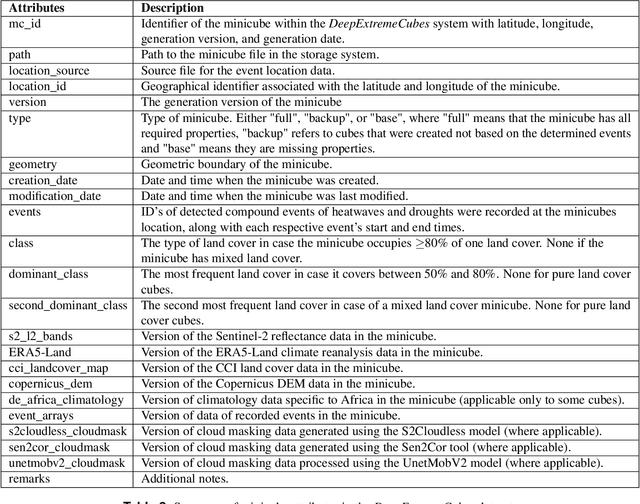Karin Mora
Nonlinear spectral analysis extracts harmonics from land-atmosphere fluxes
Jul 27, 2024Abstract:Understanding the dynamics of the land-atmosphere exchange of CO$_2$ is key to advance our predictive capacities of the coupled climate-carbon feedback system. In essence, the net vegetation flux is the difference of the uptake of CO$_2$ via photosynthesis and the release of CO$_2$ via respiration, while the system is driven by periodic processes at different time-scales. The complexity of the underlying dynamics poses challenges to classical decomposition methods focused on maximizing data variance, such as singular spectrum analysis. Here, we explore whether nonlinear data-driven methods can better separate periodic patterns and their harmonics from noise and stochastic variability. We find that Nonlinear Laplacian Spectral Analysis (NLSA) outperforms the linear method and detects multiple relevant harmonics. However, these harmonics are not detected in the presence of substantial measurement irregularities. In summary, the NLSA approach can be used to both extract the seasonal cycle more accurately than linear methods, but likewise detect irregular signals resulting from irregular land-atmosphere interactions or measurement failures. Improving the detection capabilities of time-series decomposition is essential for improving land-atmosphere interactions models that should operate accurately on any time scale.
DeepExtremeCubes: Integrating Earth system spatio-temporal data for impact assessment of climate extremes
Jun 26, 2024



Abstract:With climate extremes' rising frequency and intensity, robust analytical tools are crucial to predict their impacts on terrestrial ecosystems. Machine learning techniques show promise but require well-structured, high-quality, and curated analysis-ready datasets. Earth observation datasets comprehensively monitor ecosystem dynamics and responses to climatic extremes, yet the data complexity can challenge the effectiveness of machine learning models. Despite recent progress in deep learning to ecosystem monitoring, there is a need for datasets specifically designed to analyse compound heatwave and drought extreme impact. Here, we introduce the DeepExtremeCubes database, tailored to map around these extremes, focusing on persistent natural vegetation. It comprises over 40,000 spatially sampled small data cubes (i.e. minicubes) globally, with a spatial coverage of 2.5 by 2.5 km. Each minicube includes (i) Sentinel-2 L2A images, (ii) ERA5-Land variables and generated extreme event cube covering 2016 to 2022, and (iii) ancillary land cover and topography maps. The paper aims to (1) streamline data accessibility, structuring, pre-processing, and enhance scientific reproducibility, and (2) facilitate biosphere dynamics forecasting in response to compound extremes.
ReservoirComputing.jl: An Efficient and Modular Library for Reservoir Computing Models
Apr 08, 2022


Abstract:We introduce ReservoirComputing.jl, an open source Julia library for reservoir computing models. The software offers a great number of algorithms presented in the literature, and allows to expand on them with both internal and external tools in a simple way. The implementation is highly modular, fast and comes with a comprehensive documentation, which includes reproduced experiments from literature. The code and documentation are hosted on Github under an MIT license https://github.com/SciML/ReservoirComputing.jl.
 Add to Chrome
Add to Chrome Add to Firefox
Add to Firefox Add to Edge
Add to Edge